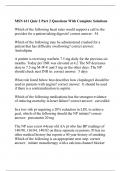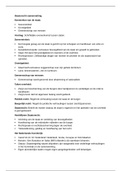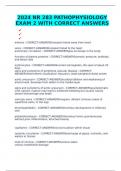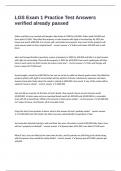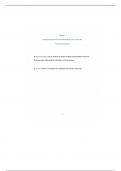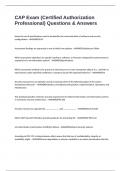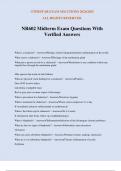2
Solutions
2.1 Types of Solutions 2.5 Ideal and Non-ideal Solutions
2.2 Expressing Concentration of Solutions 2.6 Colligative Properties and Determination
2.3 Solubility of Molar Mass
2.4 Vapour Pressure of Liquid Solutions 2.7 Abnormal Molar Masses
Topicwise Analysis of Last 10 Years’ CBSE Board Questions (2020-2011)
24 VSA
SA
LA I
20
→
LA II
16
Number of questions
12
8
4
0
2.1 2.2 2.3 2.4 2.5 2.6 2.7
Topic →
8 Maximum total weightage is of Colligative 8 Maximum SA type questions were asked from
Properties and Determination of Molar Mass. Ideal and Non-Ideal Solutions and Colligative
Properties and Determination of Molar Mass.
8 Maximum VSA type questions were asked
8 Maximum LA I type questions were asked
from Colligative Properties and Determination of from Colligative Properties and Determination
Molar Mass. of Molar Mass.
QUICK RECAP
8 Solution : A perfectly homogeneous mixture of two or more components is called solution.
8 Solute : The component which is present in lesser amount or whose physical state is changed during
the formation of solution is called solute.
,8 Solvent : The component which is present in Mass by volume w w2
larger amount and determines the physical percentage % = × 100
V Vsolution (in mL)
state of the solution is called solvent.
8 Types of solution : Depending upon the Mass fraction w1 w2
nature of solute and solvent, solutions are x1 = or x2 =
w1 + w2 w1 + w2
classified as follows :
X Gaseous solutions : Solutions in which Strength w2 (in g)
gas acts as solvent. (g L–1) × 1000
Vsolution (in mL)
Solute Solvent Examples
Parts per million w2
Solid Gas Iodine vapours in × 106
(ppm) (w1 + w2 )
air, dust or smoke
particles in air Molarity, (M) w2 × 1000
Liquid Gas Water vapours in (mol L–1)
M2 × Vsolution (in mL)
air (humidity)
Gas Gas Air Molality, (m) w2 × 1000
(mol kg–1)
X Liquid solutions : Solutions in which M2 × w1 (in g)
liquids are present in larger amount. Mole fraction, n1 n2
(x) x1 = or x2 =
Solute Solvent Examples n1 + n2 n1 + n2
Solid Liquid Salt/sugar in water (x1 + x2 = 1)
In case of gases only,
Liquid Liquid Alcohol in water
p1 p2
Gas Liquid Aerated drinks, O2 y1 = or y2 =
p1 + p2 p1 + p2
in water
(y1 + y2 = 1)
X Solid solutions : Solutions in which
8 Solubility : Maximum amount of substance
solids are present in larger amount.
that can be dissolved in a specified amount of
Solute Solvent Examples solvent at a specified temperature is called its
Solid Solid Alloys solubility.
Liquid Solid Hg in Ag, Hg in Zn 8 Factors affecting solubility of a solid in a
(Amalgam) liquid :
X Nature of solute and solvent : Polar
Gas Solid Solution of hydrogen solutes dissolve in polar solvents and
in palladium. non‑polar solutes dissolve in non-polar
solvents. (i.e., like dissolves like).
8 Different methods for expressing X Effect of temperature :
concentration of solution : – If the dissolution process is
Method of endothermic (DsolH > 0), the solubility
Formula increases with rise in temperature.
expressing
– If dissolution process is exothermic
Mass percentage w w2 (DsolH < 0), the solubility decreases
% = × 100
with rise in temperature.
W (w1 + w2 )
X Effect of pressure : Pressure does not
Volume v V2 have any significant effect on solubility
percentage % = × 100 of solids in liquids as these are highly
V (V1 + V2 )
incompressible.
, 8 Factors affecting solubility of a gas in a liquid : and p°2 are vapour pressures of pure
X Effect of pressure : Henry’s law states components 1 and 2 respectively, at the same
that “the partial pressure of the gas in temperature.
vapour phase (p) is proportional to
8 Dalton’s law of partial pressures :
the mole fraction of the gas (x) in the
solution” Ptotal = p1 + p2 = x1 p1° + x2 p2°
p = KH x where, KH is the Henry’s law = (1 – x2)p1° + x2 p2° = p1° + (p2° – p1°)
constant and is different for different x2
gases at a particular temperature.
Higher the value of KH at a given pressure, 8 If y1 and y2 are the mole fractions of the
the lower is the solubility of the gas in the components 1 and 2 respectively in the vapour
liquid. phase then, p1 = y1 Ptotal and p2 = y2 Ptotal
X Effect of temperature : As dissolution is
8 Raoult’s law for solid-liquid solutions :
an exothermic process, then according to It states that relative lowering in vapour
Le Chatelier’s principle, the solubility
pressure of a solution containing a non-
should decrease with increase of
volatile solute is equal to the mole fraction of
temperature.
the solute.
8 Raoult’s law : It states that for a solution of
p° − ps
volatile liquids, the partial vapour pressure = x2
of each component of the solution is directly p°
proportional to its mole fraction present in where, p° = vapour pressure of pure solvent
solution. p1 = p°1 x1 and p2 = p°2 x2 ; where p°1 ps = vapour pressure of solution
x2 = mole fraction of solute.
8 Ideal and non-ideal solutions :
Ideal solutions Non-ideal solutions
Negative deviation from
Positive deviation from Raoult’s law
Raoult’s law
Vapour pressure Vapour pressure
of solution of solution
= pA+
p B p° p°A p°A
Vapour pressure
Vapour pressure
Vapour pressure
pA p°B p°B
Ptotal B
p°A pB pA
pB pA
pB
xA = 1 xA = 0 xA = 1 xA = 0 xA = 1 xA = 0
xB = 0 xB = 1 xB = 0 xB = 1 xB = 0 xB = 1
Mole fraction Mole fraction Mole fraction
xB xB xB
A – B interactions ≈ A – A A – B interactions << A – A and B – B A – B interactions >> A – A and
and B – B interactions interactions B – B interactions
DHmix = 0, DVmix = 0 DHmix > 0, DVmix > 0 DHmix < 0, DVmix < 0
e.g., dilute solutions, e.g., acetone + ethanol, e.g., acetone + aniline,
benzene + toluene, acetone + CS2, acetone + chloroform,
n-hexane + n-heptane water + methanol HNO3 + water

